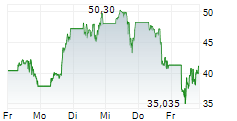Understanding the Dynamics of India vs Singapore

Introduction
The relationship between India and Singapore has grown increasingly important in the context of global trade and geopolitics. Both nations, geographically distant yet culturally rich, have established solid ties that extend beyond mere commerce to encompass education, tourism, and defense cooperation. As two rapidly developing economies, understanding the intricacies of their relationship is essential for industry stakeholders, policymakers, and citizens alike.
Economic Cooperation
In recent years, Singapore has emerged as one of India’s largest trading partners. According to the Ministry of Commerce and Industry, the trade between India and Singapore crossed USD 25 billion in the fiscal year 2021-2022. Key exports from India include petroleum products, gems and jewelry, and pharmaceuticals, while Singapore’s imports to India primarily consist of electronics and machinery. This robust trade relationship is supported by various agreements, such as the Comprehensive Economic Cooperation Agreement (CECA), which was signed in 2005 and is under review for enhancements.
Cultural Connections
Culturally, the relationship between India and Singapore is profound, shaped significantly by the Indian diaspora in Singapore, which constitutes around 9% of the country’s population. Events like the annual Deepavali celebrations and the ongoing outreach of Indian arts and literature in Singapore underline the cultural synergies that exist between the two nations.
Geopolitical Landscape
From a geopolitical standpoint, both India and Singapore are keen to collaborate on security and defense matters, particularly in the Southeast Asian region. In 2021, the two countries held joint military exercises, enhancing defense ties and ensuring mutual security against potential threats. Furthermore, both nations share a commitment to a free and open Indo-Pacific, often aligning their foreign policies for regional stability.
Future Prospects
Looking ahead, the future of India-Singapore relations appears promising. With the potential for expanding their technological collaborations, especially in areas such as FinTech and smart cities, both countries anticipate boosting innovation and economic growth. As they navigate the complexities of a post-pandemic world, the emphasis on digital transformation will play a vital role in shaping their respective economies.
Conclusion
The relationship between India and Singapore epitomizes how two nations can mutually benefit from strong diplomatic and economic ties. As they embark on new ventures and collaborations, the significance of their relationship will only grow, providing a blueprint for how countries can work together in an increasingly interconnected global environment.








